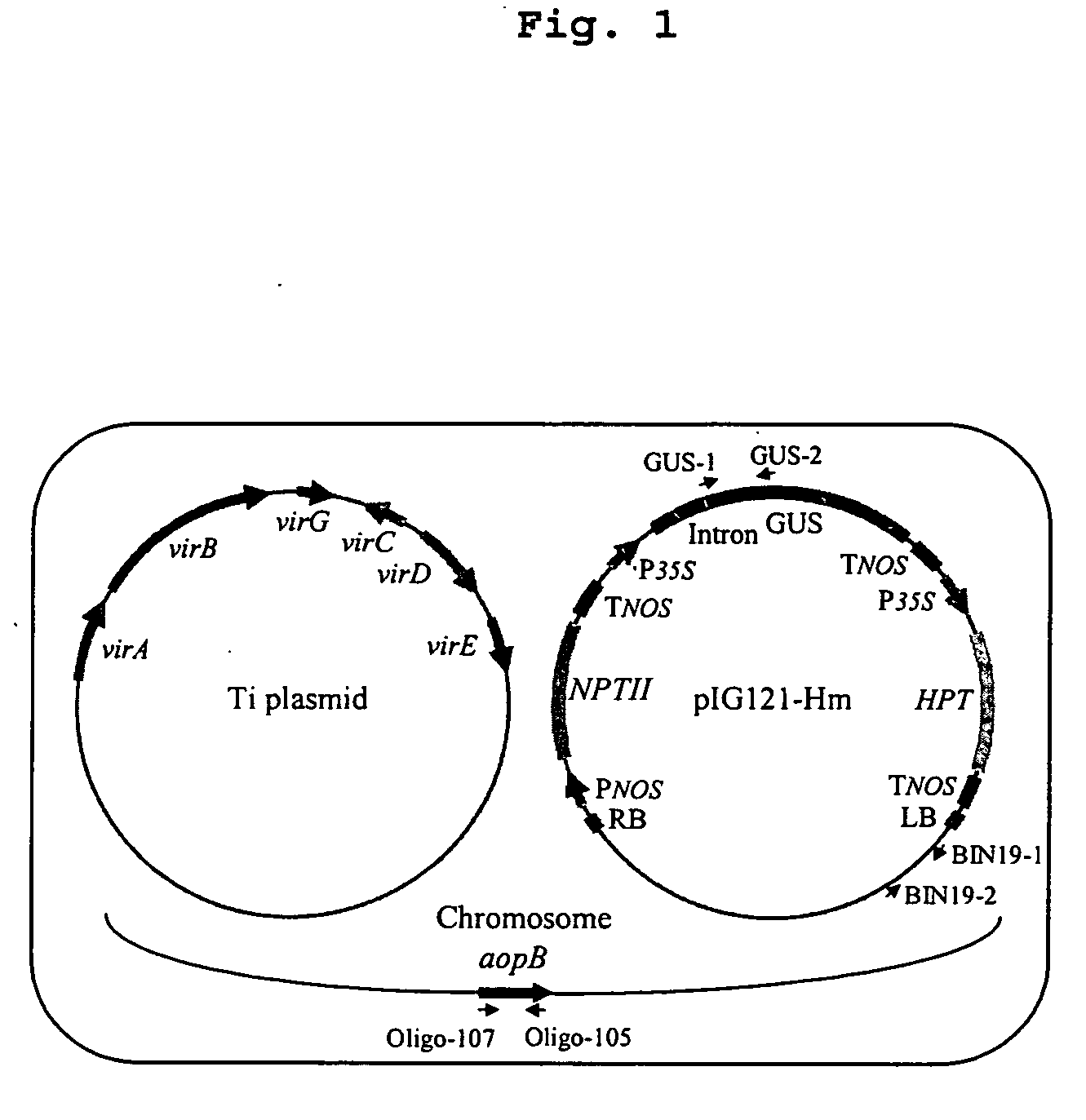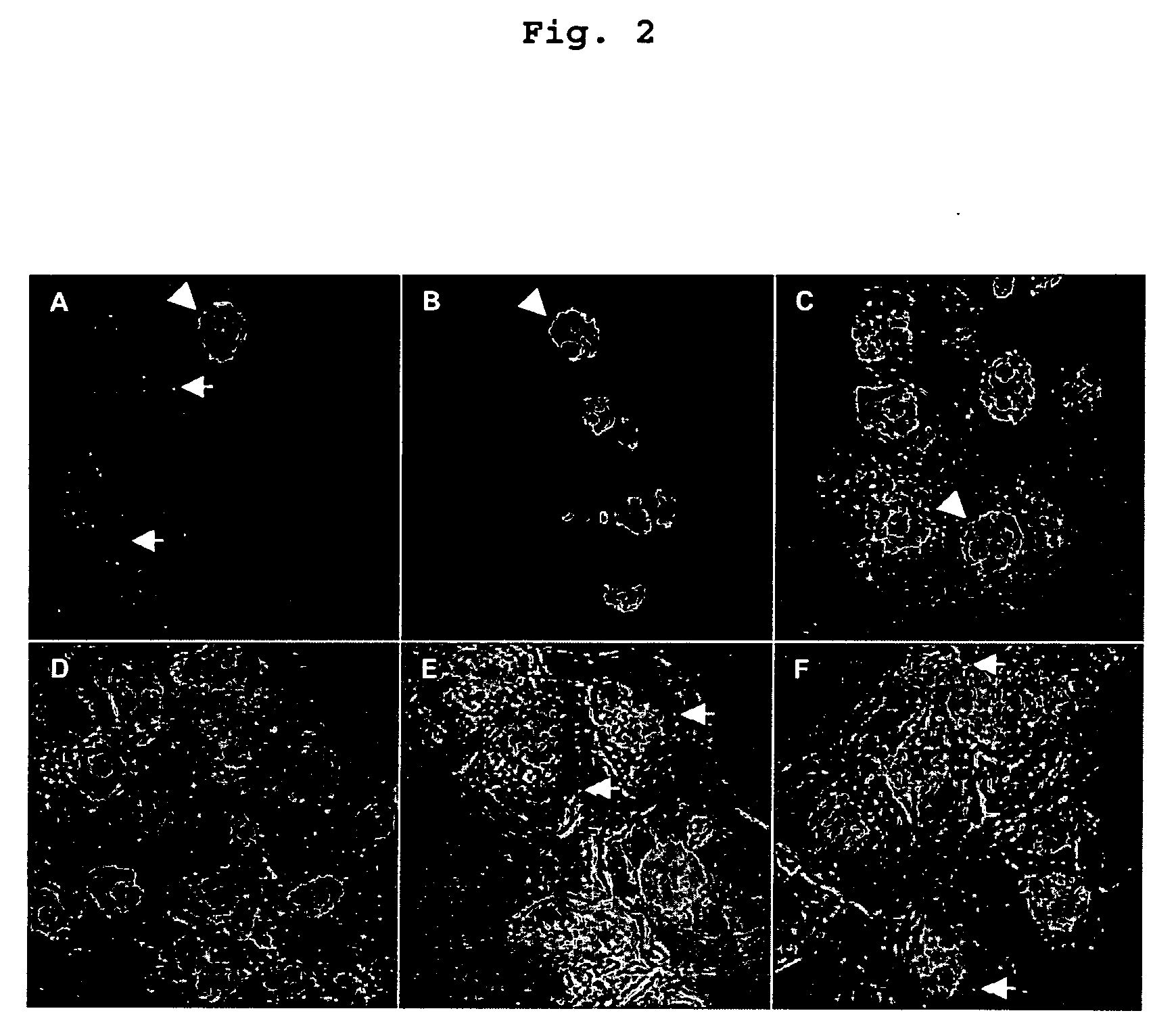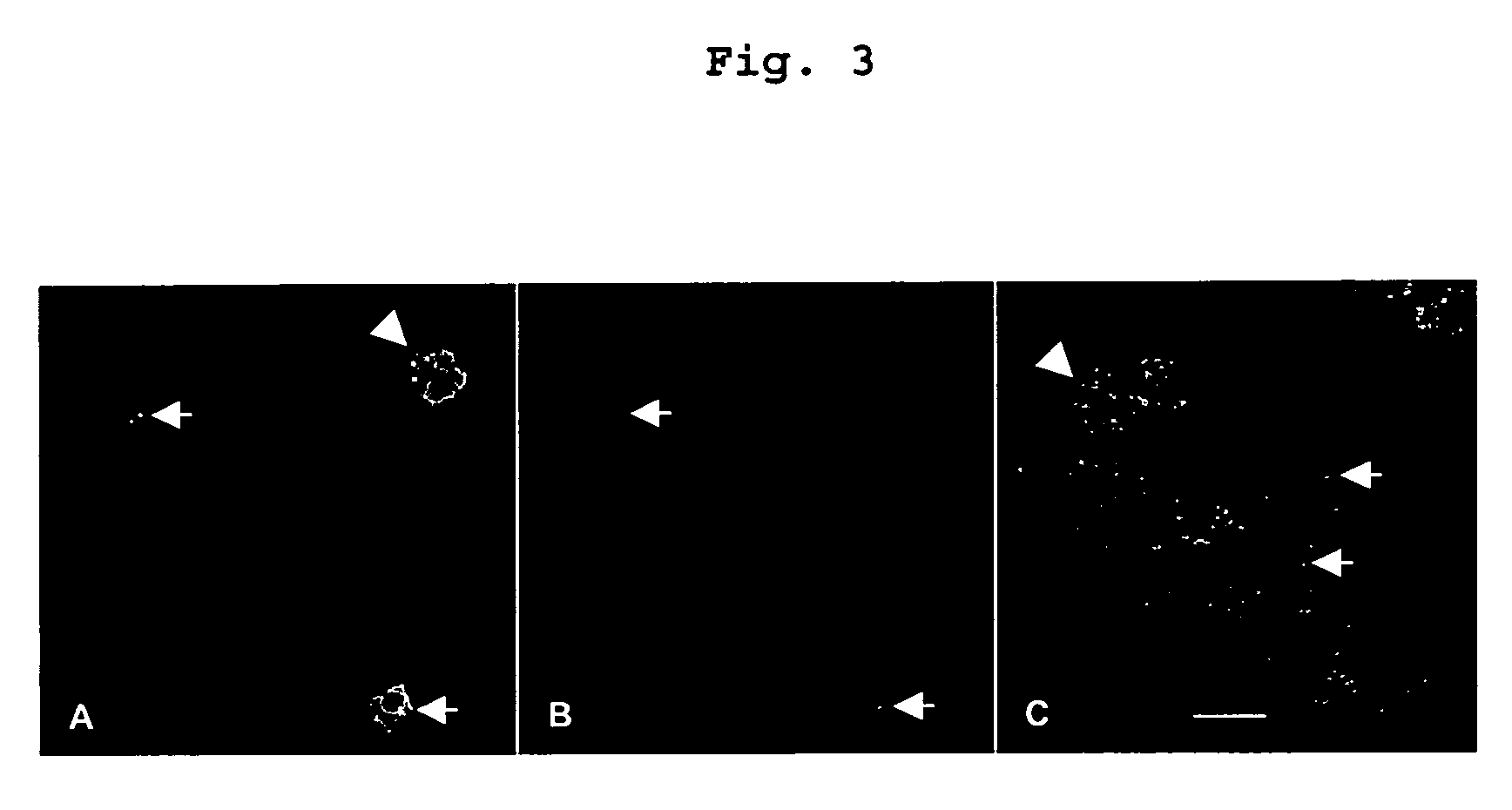Visualization of introduced dna (void) in transit by in situ hybridization
a technology visualization, which is applied in the field of in situ hybridization monitoring of exogenous nucleic acid, can solve the problems of toxicity of a marker or reporter gene, extending the time needed to develop and affecting the quality of dna-based or gene-based products
- Summary
- Abstract
- Description
- Claims
- Application Information
AI Technical Summary
Benefits of technology
Problems solved by technology
Method used
Image
Examples
examples
Agrobacterium-Mediated Transformation
[0150] Tobacco (Nicoliana tabacum) BY2 suspension-cultured cells were maintained in Murashige and Skoog (MS) liquid medium (Murashige, T., and Skoog, F. 1962. Physiol Plant 15: 473-497) supplemented with 0.2 mg / L of 2,4-D; the cultures were incubated at RT with shaking at 100 rpm and subcultured every week with a 4% inoculum. A. tumefaciens was grown overnight on AB medium; the cells were collected and then resuspended in IB medium (Cangelosi et al. 1991. Methods Enzymol., 204, 384-97) supplemented with 100 μM acetosyringone (AS). The cells were incubated at 28° C. for 16-18 hr. After washing with MS medium, 100 μl of the bacterial cell suspension (5×108 cells / ml) was added to 4 ml of BY2 cell suspension that was 3 days old after the weekly subculturing. After incubation at RT for a certain time interval, the bacterial cells were washed away from the plant cells as described previously (Lee et al. 1999. J. Bacteriol. 181(1):186-196). The plant c...
PUM
| Property | Measurement | Unit |
|---|---|---|
| Time | aaaaa | aaaaa |
| Ratio | aaaaa | aaaaa |
| Fluorescence | aaaaa | aaaaa |
Abstract
Description
Claims
Application Information
 Login to View More
Login to View More - R&D
- Intellectual Property
- Life Sciences
- Materials
- Tech Scout
- Unparalleled Data Quality
- Higher Quality Content
- 60% Fewer Hallucinations
Browse by: Latest US Patents, China's latest patents, Technical Efficacy Thesaurus, Application Domain, Technology Topic, Popular Technical Reports.
© 2025 PatSnap. All rights reserved.Legal|Privacy policy|Modern Slavery Act Transparency Statement|Sitemap|About US| Contact US: help@patsnap.com



